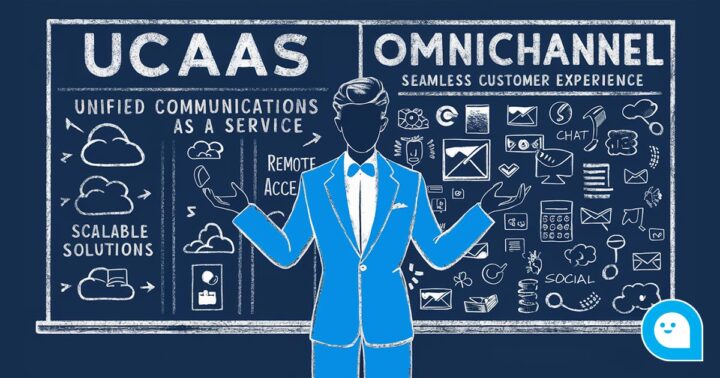UCaaS (Unified Communications as a Service)
UCaaS is a cloud-based platform designed to streamline organizational communication by providing a unified system that integrates various communication tools. The core idea is to create a seamless environment where employees can connect and collaborate regardless of location or device.
Key Components
- Voice Communication: UCaaS includes traditional voice calling, often using Voice over Internet Protocol (VoIP), allowing users to make calls over the internet.
- Video Conferencing: The platform often features video conferencing capabilities, enabling virtual meetings and webinars.
- Messaging: UCaaS offers instant messaging for real-time communication among team members.
- Collaboration Tools: Integration with file sharing and collaborative document editing applications.
Benefits
- Streamlined Communication: UCaaS eliminates the need for multiple disparate systems, allowing employees to use a single platform for all communication needs.
- Scalability: The cloud-based nature of UCaaS enables businesses to scale their communication infrastructure as needed without significant hardware investments.
- Cost Efficiency: UCaaS reduces costs associated with maintaining traditional on-premise communication systems.
- Flexibility: Employees can work from anywhere, using any device, as long as they have internet access.
Implementation
Implementing UCaaS involves migrating existing communication systems to the cloud and ensuring the new platform integrates seamlessly with other business applications. This process requires careful planning, user training, and change management to ensure a smooth transition.
Omnichannel
Omnichannel is a strategy to provide a seamless and consistent customer experience across multiple channels. It aims to integrate all customer touchpoints into a cohesive system, ensuring that customers receive the same service and information, whether they interact with a business online, by phone, or in person.
Key Components
- Multi-Channel Integration: Omnichannel encompasses various customer engagement channels, including websites, social media, email, phone, and physical stores.
- Customer Data Management: An omnichannel approach requires integrating customer data from different sources to create a unified view of each customer.
- Personalized Communication: Omnichannel strategies often involve personalized communication to enhance the customer experience, using data-driven insights to tailor interactions.
Benefits
- Seamless Customer Experience: Omnichannel ensures that customers receive consistent information and service, regardless of their channel.
- Improved Customer Retention: A seamless experience encourages customers to stay loyal to a brand.
- Enhanced Data Insights: By integrating customer data, businesses can gain deeper insights into customer behavior and preferences.
- Increased Sales and Revenue: A cohesive Omnichannel strategy can drive sales by providing customers with a more convenient and engaging experience.
Implementation
Implementing an Omnichannel strategy requires integrating various customer touchpoints into a single system. This involves aligning internal processes, technology, and personnel to ensure a consistent experience across all channels. Businesses must invest in customer relationship management (CRM) systems and data analytics to effectively gather and analyze customer data.
Comparison
The critical difference between UCaaS and Omnichannel lies in their focus and target audience:
- Focus & Target: UCaaS is mostly centered on internal communication and team collaboration, while omni channel focuses on external customer interactions and engagement. This is however evolving with UCaaS covering more customer interactions.
- Technological Approach: UCaaS integrates communication tools into a single cloud-based platform for internal use. Omnichannel integrates various customer engagement channels into a unified system to ensure a consistent customer experience.
UCaaS and Omnichannel are complementary but distinct approaches to communication.

